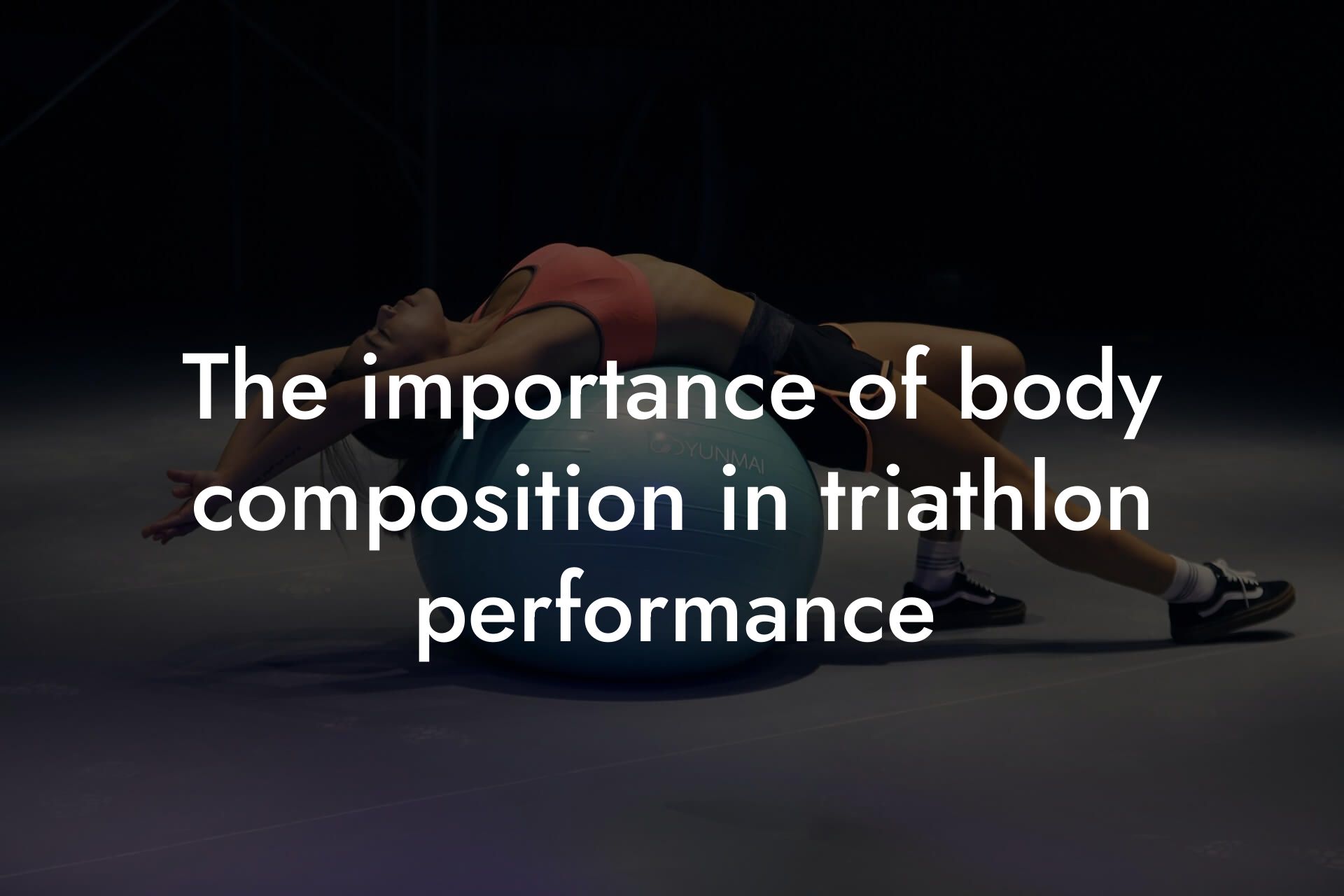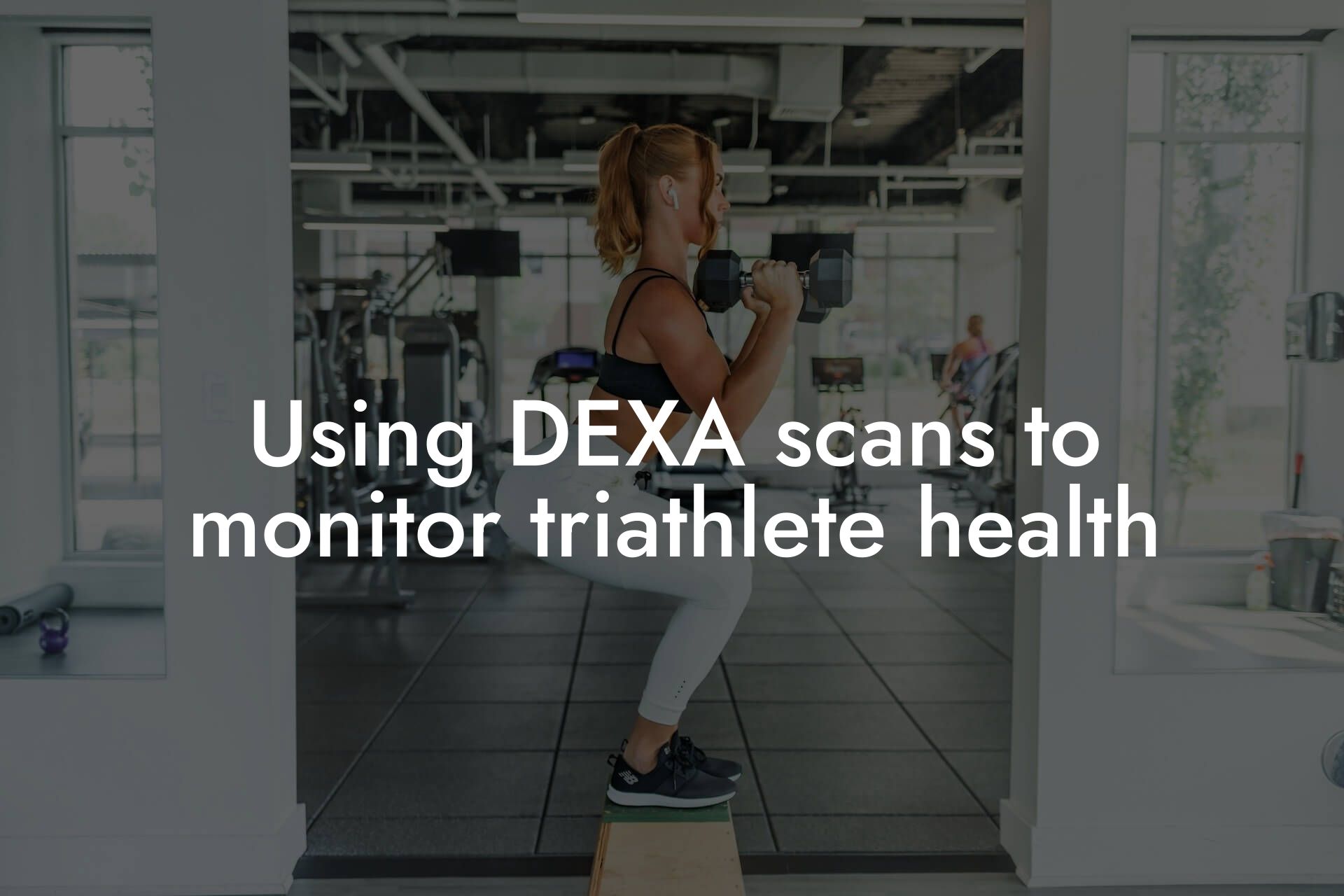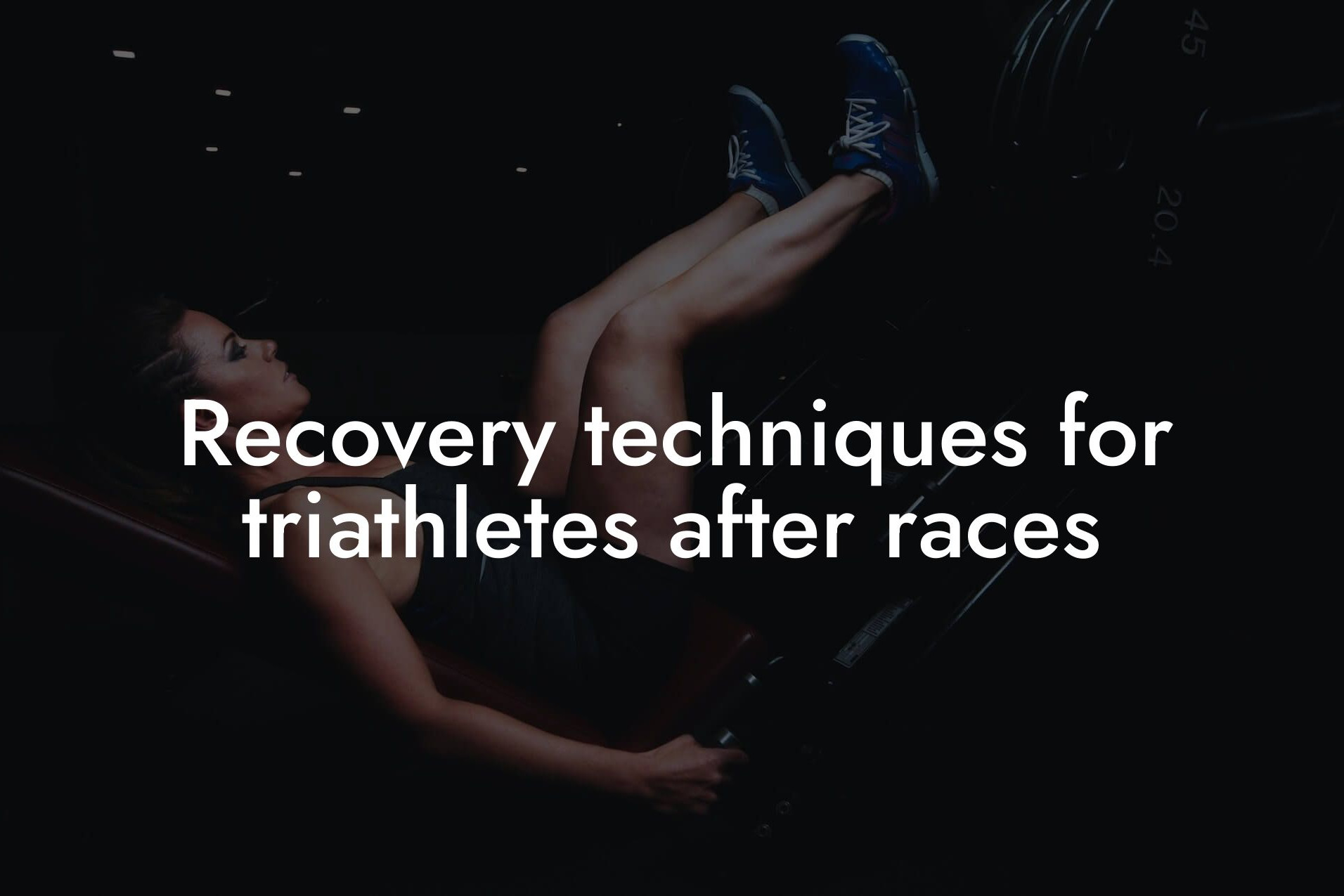As a triathlete, you're no stranger to pushing your body to its limits. Whether you're swimming, cycling, or running, you're constantly putting stress on your bones, muscles, and joints. While regular exercise is essential for overall health and fitness, it can also take a toll on your body, particularly your bone density. In this article, we'll delve into the importance of bone density for triathletes, how to prevent injuries, and what you can do to maintain strong, healthy bones.
Table of Contents
What is Bone Density?
Bone density refers to the amount of minerals, such as calcium and phosphorus, present in your bones. The higher your bone density, the stronger and more resilient your bones are. As we age, our bone density naturally decreases, making us more susceptible to osteoporosis, fractures, and other bone-related injuries. For triathletes, maintaining optimal bone density is crucial to prevent injuries and ensure optimal performance.
Why is Bone Density Important for Triathletes?
Triathletes are at a higher risk of developing low bone density due to several factors, including:
- Intensive training: Repetitive stress on your bones can lead to micro-fractures, which can weaken your bones over time.
- Inadequate nutrition: A diet lacking essential nutrients, such as calcium and vitamin D, can hinder bone health.
- Hormonal imbalances: Hormonal changes, particularly in women, can affect bone density.
- Age: As triathletes age, their bone density naturally decreases, making them more prone to injuries.
Low bone density can lead to a range of injuries, including stress fractures, shin splints, and osteoporosis. By maintaining optimal bone density, triathletes can reduce their risk of injury, improve their performance, and extend their athletic careers.
How to Prevent Injuries through Bone Density Maintenance
Preventing injuries is a top priority for triathletes. Here are some ways to maintain optimal bone density and prevent injuries:
- Incorporate strength training: Resistance exercises, such as weightlifting and bodyweight exercises, can help strengthen your bones and muscles.
- Eat a balanced diet: Focus on consuming calcium-rich foods, such as dairy products, leafy greens, and fortified plant-based milk. Vitamin D is also essential for bone health, so ensure you're getting enough through sun exposure, supplements, or fortified foods.
- Get enough rest and recovery: Adequate rest and recovery are crucial for bone health. Ensure you're getting 7-9 hours of sleep per night and taking rest days as needed.
- Monitor your training: Avoid overtraining and listen to your body. If you're experiencing pain or discomfort, take a break and adjust your training schedule accordingly.
DEXA Scans: A Game-Changer for Triathletes
At Tano Performance Group, we understand the importance of bone density for triathletes. That's why we offer DEXA (Dual-Energy X-ray Absorptiometry) scans as part of our comprehensive body assessment. DEXA scans provide a precise measurement of your bone density, allowing you to:
- Identify areas of low bone density
- Track changes in bone density over time
- Develop a personalized training and nutrition plan to improve bone health
By incorporating DEXA scans into your training regimen, you can take a proactive approach to preventing injuries and optimizing your performance.
Additional Tips for Triathletes
In addition to maintaining optimal bone density, here are some additional tips to help prevent injuries and optimize your performance:
- Incorporate flexibility and stretching exercises into your training routine
- Wear proper gear, including shoes and orthotics, to reduce stress on your joints
- Stay hydrated and fuel your body with a balanced diet
- Listen to your body and take regular breaks to avoid burnout
As a triathlete, you know that maintaining optimal bone density is crucial to preventing injuries and optimizing your performance. By incorporating strength training, a balanced diet, and regular rest and recovery into your training regimen, you can reduce your risk of injury and extend your athletic career. At Tano Performance Group, we're committed to helping you achieve your goals through our comprehensive body assessment, including DEXA scans. Take control of your bone health today and unlock your full potential as a triathlete.
Get Started with Tano Performance Group
Ready to take your training to the next level? Contact us at Tano Performance Group to schedule your comprehensive body assessment, including a DEXA scan. Our team of experts will work with you to develop a personalized plan to improve your bone density, reduce your risk of injury, and optimize your performance. Don't wait – take the first step towards becoming a stronger, healthier, and more resilient triathlete.
Frequently Asked Questions
What is bone density, and why is it important for triathletes?
Bone density refers to the measure of how dense and strong your bones are. As a triathlete, having strong bones is crucial to prevent injuries, particularly stress fractures, which can occur due to repetitive loading and impact. Maintaining optimal bone density helps ensure that your bones can withstand the demands of triathlon training and competition.
How does triathlon training affect bone density?
Triathlon training, which involves a combination of swimming, cycling, and running, can have both positive and negative effects on bone density. While weight-bearing activities like running can help improve bone density, non-weight-bearing activities like swimming and cycling may not provide the same benefits. Additionally, the repetitive nature of triathlon training can lead to overuse injuries, which can negatively impact bone density.
What are the risk factors for low bone density in triathletes?
Risk factors for low bone density in triathletes include being female, having a low body mass index (BMI), experiencing amenorrhea (loss of menstrual cycle), and having a history of stress fractures or other bone-related injuries. Additionally, triathletes who engage in high-volume or high-intensity training, particularly in their youth, may be at increased risk of developing low bone density.
How can triathletes prevent injuries related to low bone density?
To prevent injuries related to low bone density, triathletes should focus on incorporating strength training exercises that target the core, legs, and hips. This can include exercises like squats, lunges, and deadlifts. Additionally, triathletes should ensure they are getting adequate calcium and vitamin D through their diet or supplements, and maintain a healthy body weight.
What is the role of nutrition in maintaining bone density?
Nutrition plays a critical role in maintaining bone density. A diet rich in calcium and vitamin D is essential for building and maintaining strong bones. Triathletes should aim to consume 1,000-1,200 mg of calcium and 600-800 IU of vitamin D per day. Additionally, a diet rich in protein, omega-3 fatty acids, and antioxidants can help support bone health.
Can supplements help improve bone density in triathletes?
While supplements should not replace a healthy diet, certain supplements like calcium, vitamin D, and omega-3 fatty acids can help support bone health. However, it's essential to consult with a healthcare professional or registered dietitian before adding any supplements to your routine.
How can triathletes incorporate strength training into their routine?
Triathletes can incorporate strength training into their routine by setting aside 1-2 days per week for strength exercises. This can include exercises like squats, lunges, deadlifts, and leg press, as well as core exercises like planks and Russian twists. It's essential to start slowly and gradually increase the intensity and volume of strength training over time.
What are the benefits of incorporating plyometric exercises into triathlon training?
Plyometric exercises, such as jump squats and box jumps, can help improve bone density by subjecting the bones to high-impact forces. Additionally, plyometric exercises can help improve power, speed, and agility, which can enhance overall triathlon performance.
How can triathletes reduce their risk of stress fractures?
To reduce the risk of stress fractures, triathletes should gradually increase their training volume and intensity, incorporate strength training exercises, and wear proper footwear. Additionally, triathletes should listen to their bodies and take regular rest days to allow their bones to recover.
What are the symptoms of a stress fracture?
The symptoms of a stress fracture can include pain or tenderness in a specific area, swelling, bruising, and difficulty bearing weight. If you're experiencing any of these symptoms, it's essential to seek medical attention to rule out a stress fracture.
How are stress fractures diagnosed?
Stress fractures are typically diagnosed through a combination of physical examination, medical history, and imaging tests like X-rays, MRIs, or bone scans. A healthcare professional may also perform a thorough examination of the affected area to assess for pain, tenderness, and range of motion.
How are stress fractures treated?
The treatment of stress fractures typically involves a period of rest and recovery, during which time the affected area is immobilized to allow the bone to heal. In some cases, surgery may be necessary to stabilize the bone. Additionally, triathletes may need to modify their training routine to reduce the risk of further injury.
Can triathletes continue to train while recovering from a stress fracture?
While it's essential to allow the affected bone to rest and recover, triathletes can often continue to train in other ways, such as swimming or cycling, to maintain cardiovascular fitness. However, it's essential to consult with a healthcare professional or coach to develop a modified training plan that takes into account the injury.
How long does it take to recover from a stress fracture?
The recovery time from a stress fracture can vary depending on the severity of the injury, but it typically ranges from 6-12 weeks. During this time, triathletes should focus on rest, recovery, and rehabilitation to ensure the bone heals properly.
What are the long-term consequences of low bone density in triathletes?
The long-term consequences of low bone density in triathletes can include an increased risk of osteoporosis, fractures, and osteoarthritis. Additionally, low bone density can negatively impact overall health and quality of life, making it essential for triathletes to prioritize bone health.
How can triathletes monitor their bone density?
Triathletes can monitor their bone density through regular bone density scans, such as dual-energy X-ray absorptiometry (DXA) scans. These scans can provide valuable information about bone density and help identify any potential issues early on.
What role does age play in bone density and injury prevention?
Age plays a significant role in bone density and injury prevention. As triathletes age, their bone density naturally decreases, making them more susceptible to injuries. However, incorporating strength training and other bone-healthy habits into their routine can help mitigate this decline.
How can triathletes balance their training with bone health?
Triathletes can balance their training with bone health by prioritizing strength training, incorporating bone-healthy habits into their daily routine, and listening to their bodies to avoid overtraining and injury. Additionally, triathletes should work with a coach or healthcare professional to develop a training plan that takes into account their individual needs and risk factors.
What are the benefits of working with a coach or healthcare professional to develop a bone-healthy training plan?
Working with a coach or healthcare professional can provide triathletes with personalized guidance and support to develop a training plan that prioritizes bone health. This can include customized strength training exercises, nutrition plans, and injury prevention strategies tailored to the individual's needs and risk factors.
How can triathletes incorporate bone-healthy habits into their daily routine?
Triathletes can incorporate bone-healthy habits into their daily routine by prioritizing calcium and vitamin D intake, engaging in regular strength training exercises, and getting adequate sleep and recovery time. Additionally, triathletes can incorporate activities like yoga or Pilates to improve flexibility and balance.
What is the role of sleep and recovery in bone health?
Sleep and recovery play a critical role in bone health. During sleep, the body repairs and rebuilds bone tissue, making it essential for triathletes to prioritize adequate sleep and recovery time. Aim for 7-9 hours of sleep per night and incorporate rest days into your training routine.
How can triathletes prioritize bone health in their training and daily routine?
Triathletes can prioritize bone health by incorporating strength training exercises, prioritizing calcium and vitamin D intake, getting adequate sleep and recovery time, and listening to their bodies to avoid overtraining and injury. Additionally, triathletes should work with a coach or healthcare professional to develop a training plan that takes into account their individual needs and risk factors.
Here are some related articles you might love...
- The importance of body composition in triathlon performance
- Using DEXA scans to monitor triathlete health
- Recovery techniques for triathletes after races
- Balancing training for swimming, cycling, and running
- Nutrition strategies for triathlon training and competition
- Strength training for triathletes to improve overall performance
- Off-season training strategies for triathletes
- The role of lean muscle mass in triathlon events
- Reducing body fat for better endurance in triathlons
Zak Faulkner
Zak Faulkner is a leading authority in the realm of physical health and body composition analysis, with over 15 years of experience helping professionals optimise their fitness and well-being. As one the experts behind Tano Performance Group, Zak has dedicated his career to providing in-depth, science-backed insights that empower clients to elevate their physical performance and overall health.
With extensive knowledge of DEXA technology, Zak specializes in delivering comprehensive body assessments that offer precise data on body fat, muscle mass, bone density, and overall physique. His expertise enables individuals to make informed decisions and achieve their fitness goals with accuracy and confidence. Zak’s approach is rooted in a deep understanding of human physiology, combined with a passion for helping clients unlock their full potential through personalised strategies.
Over the years, Zak has earned a reputation for his commitment to excellence, precision, and client-focused service. His guidance is trusted by top professionals who demand the best when it comes to their health. Whether advising on fitness programs, nutritional strategies, or long-term wellness plans, Zak Faulkner’s insights are a valuable resource for anyone serious about taking their health and fitness to the next level.
At Tano Performance Group, Zak continues to lead our Content Team revolutionising how professionals approach their physical health, offering unparalleled expertise that drives real results.




